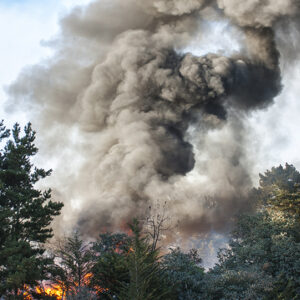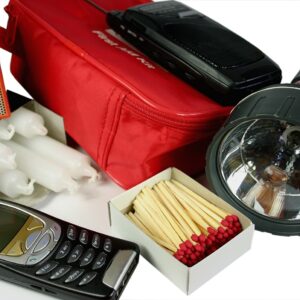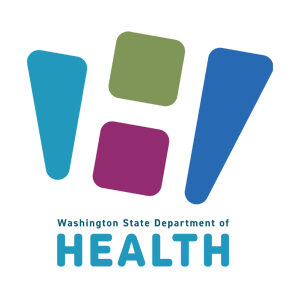Contact Us
Overview
Floods can impact the public’s health, sometimes even leading to loss of life. They can also cause damage to structures, land, roads, and utilities. Floods may also lead to erosion and landslides, and result in secondary damage. Here are frequently asked questions and answers to keep you and your loved ones safe.
What if I am under flood watch or flood warning?
A Flood Warning is significant for “Take Action!” because a flood is either occurring or will happen shortly. A Flood Watch means “Be Aware” because conditions are just right for flooding to occur in the area.
- Gather emergency supplies you previously stocked in your home and stay tuned to local radio or television station for updates.
- Do not try to walk or drive through flooded areas. • Follow emergency evacuation routes. If your car stalls in floodwater, get out quickly and move to higher ground.
- Stay away from moving water. • Stay away from disaster areas unless authorities ask for volunteers.
- Stay away from downed power lines.
- If your home is flooded, turn the utilities off until emergency officials tell you it is safe to turn them on.
- Avoid weakened floors, walls and rooftops.
- Fill bathtubs, sinks and plastic soda bottles with clean water. Sanitize the sinks and tubs first by using bleach. Rinse and fill with clean water.
- Wash hands frequently with soap and clean water if you come in contact with floodwaters.
- Have your immunization records handy or be aware of your last tetanus shot, in case you should receive a puncture wound or a wound becomes contaminated during or after the flood.
- If you are injured, get medical assistance.
What if I am ordered to evacuate?
Never ignore an evacuation order. Authorities will direct you to leave if you are in a low-lying area, or within the greatest potential path of the rising waters.
- Take only essential items with you.
- If you have time, turn off the gas, electricity and water.
- Disconnect appliances to prevent electrical shock when power is restored.
- Follow the designated evacuation routes and expect heavy traffic
- Do not attempt to drive or walk across creeks or flooded roads.
How do I stay informed during a flood disaster?
- Self-register for ALERT Spokane to receive alert notifications at: http://www.spokaneprepares.org...
- Tune into the all hazards National Warning Radio System (NWR).
- Tune into the Emergency Alert System (EAS), a national public warning system.
- More information on Emergency Alert radios can be found at: http://www.nws.noaa.gov/nwr/nw...
What are some other basic steps to prepare for a storm?
- Learn about your community’s emergency plans, warning signals, evacuation routes, and locations of emergency shelters.
- Build an emergency kit.
- Practice a flood evacuation route with your family.
- Prepare your home for a flood. Call your local building department or office of emergency management for information.
- Evaluate the furnace, water heater and electric panel in your home.
- Consider installing “check valves” to prevent flood water from backing up into the drains of your home.
- Purchase flood insurance from FEMA. • Listen to your radio or television for reports of flood danger.
- Keep your car filled with gas.
- Identify potential home hazards and know how to secure or protect them before the flood strikes.
Which areas are at high-risk for potential flooding?
- Low-lying areas.
- Areas near water.
- Infrastructure.
- To find flood hazard maps in your area: https://fortress.wa.gov/ecy/co...
What emergency supplies will I need?
You should store your home with supplies that may be needed during any emergency period
- Multiple clean containers for water. Big enough for a 3-5 day supply of water.
- A 3-5 day supply of non-perishable food, including a non-electric can opener.
- A first aid kid, prescription medicines and any special medical needs.
- A battery-powered radio, flashlights, and extra batteries.
- Sleeping bags or extra blankets. • Water-purifying supplies, such as chlorine or iodine tables.
- Baby supplies-baby food, diapers, prepared formula.
- Personal hygiene supplies, such as toothpaste, soap, etc.
- Rubber boots, sturdy shoes and waterproof gloves.
How do I keep myself and my family safe?
Create a Family Communication and Disaster Plan.
Communication Plan:
Because you and your family may not be together when a disaster hits, it’s important to create a communication plan to help you and your loved ones connect and get help. Complete a contact card for each family member. Have them keep these cards handy in a wallet, purse, or backpack. Templates for contact cards can be found at: http://emergency.cdc.gov/prepa...
- Identify an out-of-town contact, such as a friend or relative, who family members can call to let them know they are safe. It may be easier to make a long-distance phone call than to call across town, because phone lines can be jammed. An out-of-town contact may be in a better position to communicate among separated family members.
- Teach your family members how to text. It may seem like second nature to some of us, but not everyone texts. During an emergency it’s often easier to get a text message delivered rather than a phone call.
- Subscribe to an emergency alert system. Check with your local health department or emergency management agency to see if there is one offered for your area. Post emergency telephone numbers by home phones or save them in your cell phone (fire, police, ambulance, etc.).
- Teach children how and when to call 911 for help.
Disaster Plan:
Learn about your community’s warning signals. What do they sound like and what you should do when you hear them?
- Determine the best escape routes from your home. Find two ways out of each room.
- Show each family member how and when to turn off the water, gas, and electricity at the main switches.
- Teach each family member how to use the fire extinguisher, and show them where it’s kept.
- Practice your plan by quizzing your kids periodically and conduct fire and other emergency drills.
- Check your emergency supplies throughout the year to replace batteries, food, and water as needed.
What are potential health impacts?
Injury, disease and death from:
- Drowning.
- Puncture wounds, cuts, electrocution, animal bites.
- Hypothermia.
- Carbon Monoxide Poisoning-Carbon monoxide is a colorless, odorless, tasteless gas produced by burning gas, wood, propane, charcoal or other fuel. Improperly ventilated appliances and engines, particularly in a tightly sealed or enclosed space, may allow carbon monoxide to accumulate to dangerous levels.
- Foodborne illness-Contaminated food and lack of refrigeration.
- Waterborne Illness- Contamination of water sources.
- Communicable disease- Any disease transmitted from one person or animal to another; also called contagious disease. From crowded shelters and lack of proper sanitation/hygiene.
- Respiratory Illness- Exposure to mold and mildew and communicable diseases.
- Vector Borne Illness- "Vector-borne disease" is the term commonly used to describe an illness caused by an infectious microbe that is transmitted to people by blood-sucking arthropods. The arthropods (insects or arachnids) that most commonly serve as vectors include: 1.) blood sucking insects such as mosquitoes, fleas, lice, biting flies and bugs, and 2.) blood sucking arachnids such as mites and ticks. The term “vector” refers to any arthropod that transmits a disease through feeding activity. Post-storm standing water creating an environment for increase in mosquito and tick populations that carry diseases such as West Nile and Lyme disease.
- Chemical Exposure- Damage to facilities containing hazardous chemicals.
- Skin Disease- Bacterial contamination of wounds and pathogens. • Mental Health Impact- Depression, anxiety, dissociation and post-traumatic stress disorder.
Environmental Services:
- Indoor Environment: Buildings and homes flooded needing water removal and mold remediation
- Outdoor Environment: Release of chemicals and hazardous materials and disruption of sewage and waste water treatment facility operations.
What precautions should I take after a flood occurs?
- Wear gloves and boots when cleaning up.
- Open all doors and windows.
- Wash all clothes and linens in hot water.
- Wash dirt and mud from walls, counters, and hard surfaced floors with soap and water.
- Pay attention to the radio and television for information regarding the safety of public water usage. Until water is cleared as safe, use clean bottled water.
- Learn how to purify water. If you have a well, learn how to decontaminate it.
- Discard all food that has come into contact with floodwater.
- Do not use your septic system when water is standing on the ground around it.
Resources:
Spokane Regional Health District
Washington State Department of Health-Drinking Water
http://www.doh.wa.gov/Communit...
Washington State Emergency Management Division-Flood
http://mil.wa.gov/static/75/fl...
Center for Disease Control- Emergency Preparedness and Response- Flooding
http://emergency.cdc.gov/disas...

Public Health Emergency Preparedness and Response Program
Working with public health partners, health care, and community agencies to respond to area health emergencies.

Do 1 Thing
Do 1 Thing is a 12-month program that makes it easy to prepare for emergencies or disasters.

